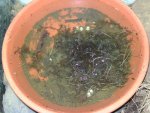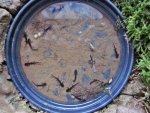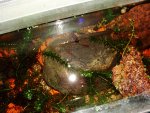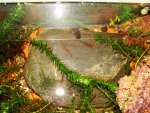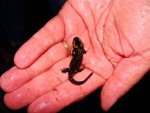Hi to you all. I'm Paul JB's Dad & we could really do with some advice. Our female fire Salamander has started sitting in her water & has passed what looks like an egg case. She had about 12 babies in July & we managed to keep the alive for about 15 days. Then one by one they started to die. We were keeping them in a shallow filled (5cm) amphibian vivarium. With pond plant for airation & water from a garden pond.
We had fed them on green water from a garden pond first. This we followed with Daphnia,blood worms & brine shrimp. We changed some of the water with more green water every few days .
All seemed to be going well but one or two they started to get air bubles within them. Being unable to stay down. like a swim bladder problem.They lived about a day like this & then died. At first it was just the smaller ones but then, the really healthy looking larger ones started to die. I came home from work one day to find 3 dead.JB was devastated but I was more so as I'm Dad & we are supposed to be able to do things. My hopes are that someone can tell me how to avoid this happening again. Plus with it being November we will have fluctuations in day/night temperatures. So as I said in the title Help Please
Thanks PB
We had fed them on green water from a garden pond first. This we followed with Daphnia,blood worms & brine shrimp. We changed some of the water with more green water every few days .
All seemed to be going well but one or two they started to get air bubles within them. Being unable to stay down. like a swim bladder problem.They lived about a day like this & then died. At first it was just the smaller ones but then, the really healthy looking larger ones started to die. I came home from work one day to find 3 dead.JB was devastated but I was more so as I'm Dad & we are supposed to be able to do things. My hopes are that someone can tell me how to avoid this happening again. Plus with it being November we will have fluctuations in day/night temperatures. So as I said in the title Help Please
Thanks PB

